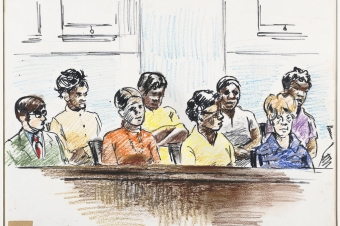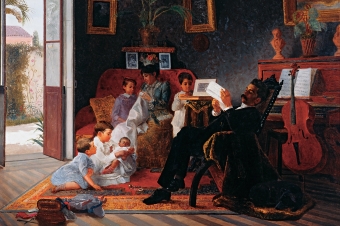Summary:
The activity puts the students in a simulated Judicial Court Hearing, according to the previous procedures in the procedural laws. This hearing results from an action of a real simulated case, but gotten from real process access. It was sought to develop in the students the posture and necessary abilities to make them able to influence at the result of the decision for their performance at the hearing.
Objective:
- SPECIFIC GOALS: the activity stimulates the student preparation for their actuation in hearings, working contents from Civil Law, Civil Procedural Law, Penal Law, Penal Processual Law. The hearings were stimulated from real cases, observing the most recurrent procedures as well as Summary, Ordinary and Special.
- DEVELOPED ABILITIES: It was expected the increase on the student’s performance, as the protagonist in hearings, which they can influence the judging result. Also, it was expected to develop posture, initiative, legal reasoning, and capacity to elaborate questions that are important and relevant to the witnesses and personal testimony.
Dynamics:
- LEARNING METHOD: simulation.
- REQUIREMENTS: in relation to the students, it was consisted at the sending of the case constants parts, in advance of a week for studies and preparation, including the witnesses’ prior inventory and observing each procedure.
In relation to the professor, it was involved on the realization of legal process for extraction of initial and answers elements, just to make possible to the students that they could work with real cases. Often, these cases had different results from real cases, allowing the students to compare the real case to that one developed in their activity, also observing where were the right and eventual misconceptions.
- DEVELOPMENT OF THE DYNAMICS: The activity follows rigorous procedures of a real hearing, according previous at the Civil Process Code or Penal Process Code. During the activity, the professor limited himself to just observe and only intervene when needed (discretely) for the act was realized observing the legal procedures. The activity development could be seen on pictures and attached files.
- ATTENTION IN THE CLASSROOM: It is suggested a previous group meeting that would work during the hearing, to plan the work. The severity during the hearing, following the norms, including with the use of the forensics clothes was determinant for the work’s success, which took place in a room prepared for hearing and built with the same pattern of the room founded at the Judicial Center buildings.
Evaluation:
- GRADE EVALUATION: the students are evaluated for the performance during each hearing that they participated – as author’s lawyer and in a future class, in a different case, as patron of the defendant. The work preparation, the observation of the procedures and the control of how many witnesses, the option of picking or not testimonials, the importance of confronting witnesses, ultimately, the student posture as a protagonist of the hearing in a mode of influence at the cause ‘s judgement are all elements taken into account in their evaluation.






